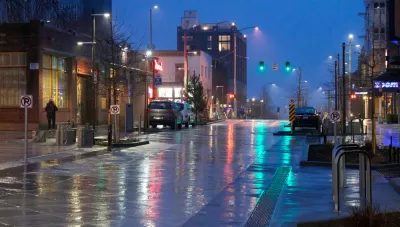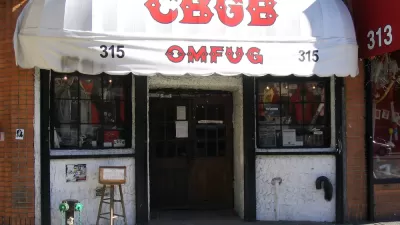The city of Seattle is making more room for alternative transportation modes in its level of service calculations.

The last meeting of the year for the Seattle City Council's Planning, Land Use, and Zoning Committee was a significant one, reports Stephen Fesler, with new regulatory requirements for transportation level-of-service standards (LOS) moving out of committee.
Fesler provides details on the LOS reform approved by the committee:
The proposed changes are designed to better implement recent LOS policy changes that were made through the city’s comprehensive plan update in 2016. One of the key paradigm shifts that took place in the update was to set specific target rates of transportation modes (e.g., walking, biking, transit, and driving) across eight geographic areas (sectors) of the city, which would be achieved by 2035. Within each geographic sector, the comprehensive plan identifies the single-occupant vehicle (SOV) rate as a percentage of total trips in 2016 and a target rate for 2035, which is generally lower than than [sic] the 2016 number. Previously, the comprehensive plan had measured LOS based upon the ratio of traffic volume to arterial capacity on key corridors.
Fesler provides a lot more detail on the potential and desired consequences of the LOS changes.
Also on the agenda at the final committee hearing of the year was new design guidelines for the neighborhoods of Uptown and the University District.
FULL STORY: City Council Poised to Reform Implementation of LOS Standards and New U District, Uptown Design Guidelines

Trump Administration Could Effectively End Housing Voucher Program
Federal officials are eyeing major cuts to the Section 8 program that helps millions of low-income households pay rent.

Planetizen Federal Action Tracker
A weekly monitor of how Trump’s orders and actions are impacting planners and planning in America.

Ken Jennings Launches Transit Web Series
The Jeopardy champ wants you to ride public transit.

California Invests Additional $5M in Electric School Buses
The state wants to electrify all of its school bus fleets by 2035.

Austin Launches $2M Homelessness Prevention Fund
A new grant program from the city’s Homeless Strategy Office will fund rental assistance and supportive services.

Alabama School Forestry Initiative Brings Trees to Schoolyards
Trees can improve physical and mental health for students and commnity members.
Urban Design for Planners 1: Software Tools
This six-course series explores essential urban design concepts using open source software and equips planners with the tools they need to participate fully in the urban design process.
Planning for Universal Design
Learn the tools for implementing Universal Design in planning regulations.
Ada County Highway District
Clanton & Associates, Inc.
Jessamine County Fiscal Court
Institute for Housing and Urban Development Studies (IHS)
City of Grandview
Harvard GSD Executive Education
Toledo-Lucas County Plan Commissions
Salt Lake City
NYU Wagner Graduate School of Public Service





























